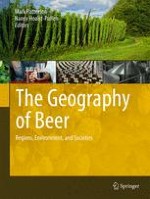2014 | OriginalPaper | Buchkapitel
11. Sustainability Trends in the Regional Craft Beer Industry
verfasst von : Nancy Hoalst-Pullen, Mark W. Patterson, Rebecca Anna Mattord, Michael D. Vest
Erschienen in: The Geography of Beer
Verlag: Springer Netherlands
Aktivieren Sie unsere intelligente Suche, um passende Fachinhalte oder Patente zu finden.
Wählen Sie Textabschnitte aus um mit Künstlicher Intelligenz passenden Patente zu finden. powered by
Markieren Sie Textabschnitte, um KI-gestützt weitere passende Inhalte zu finden. powered by
